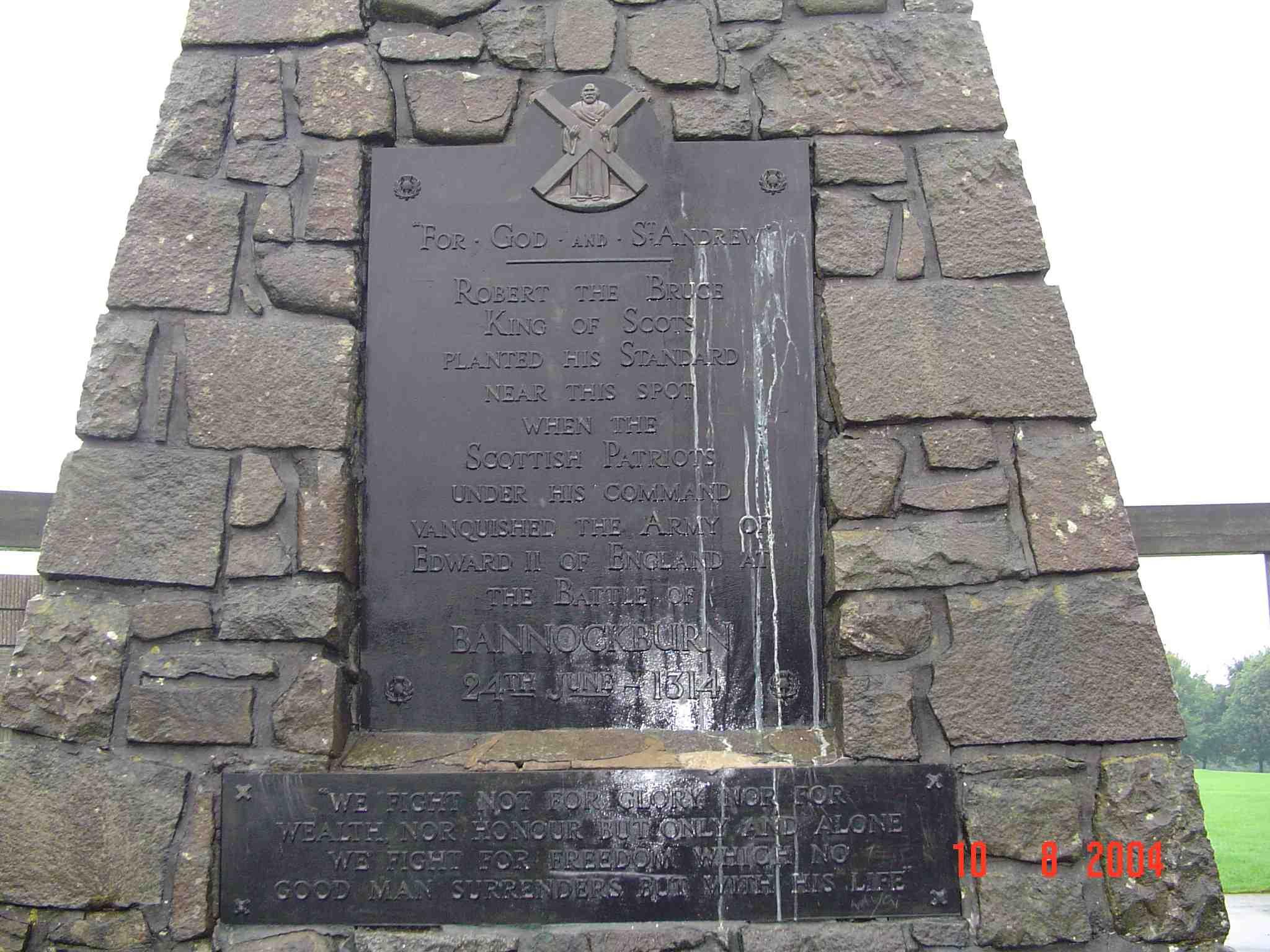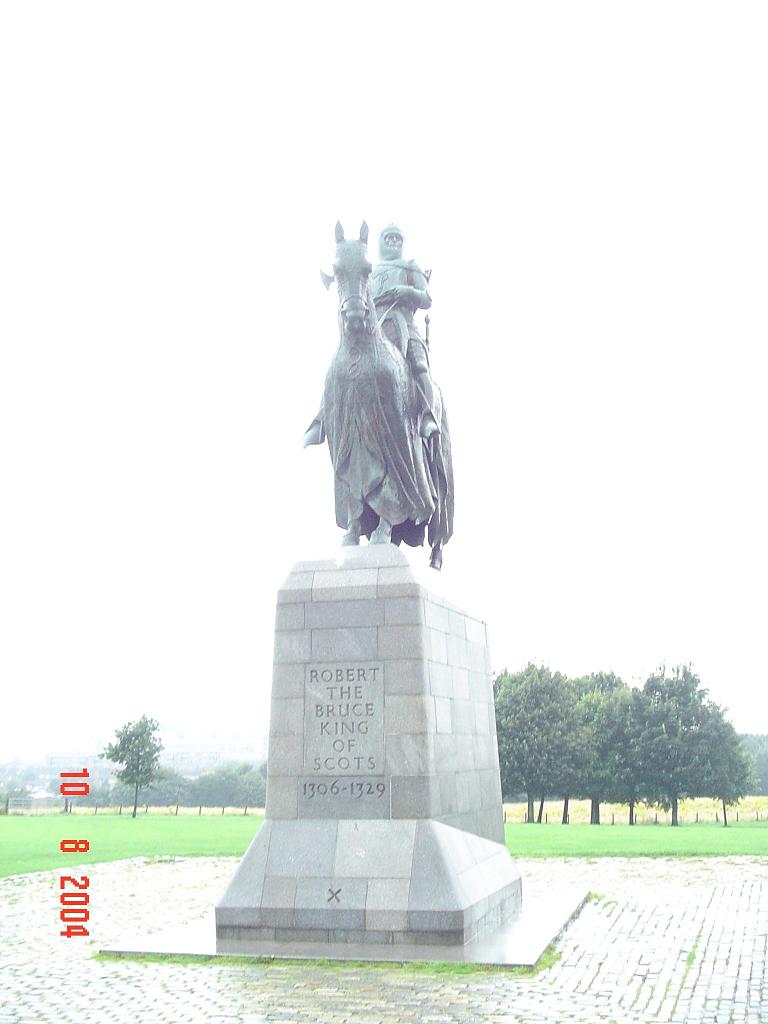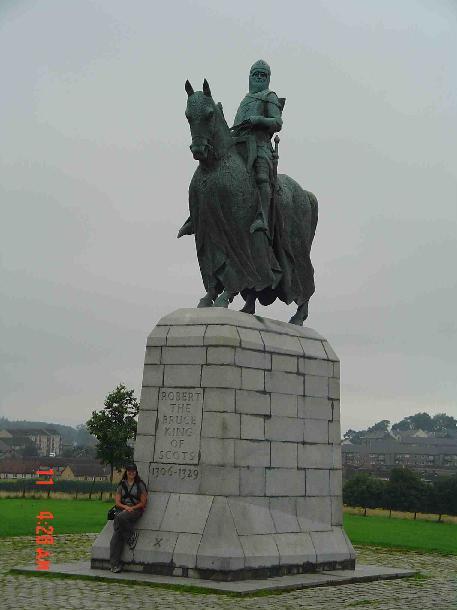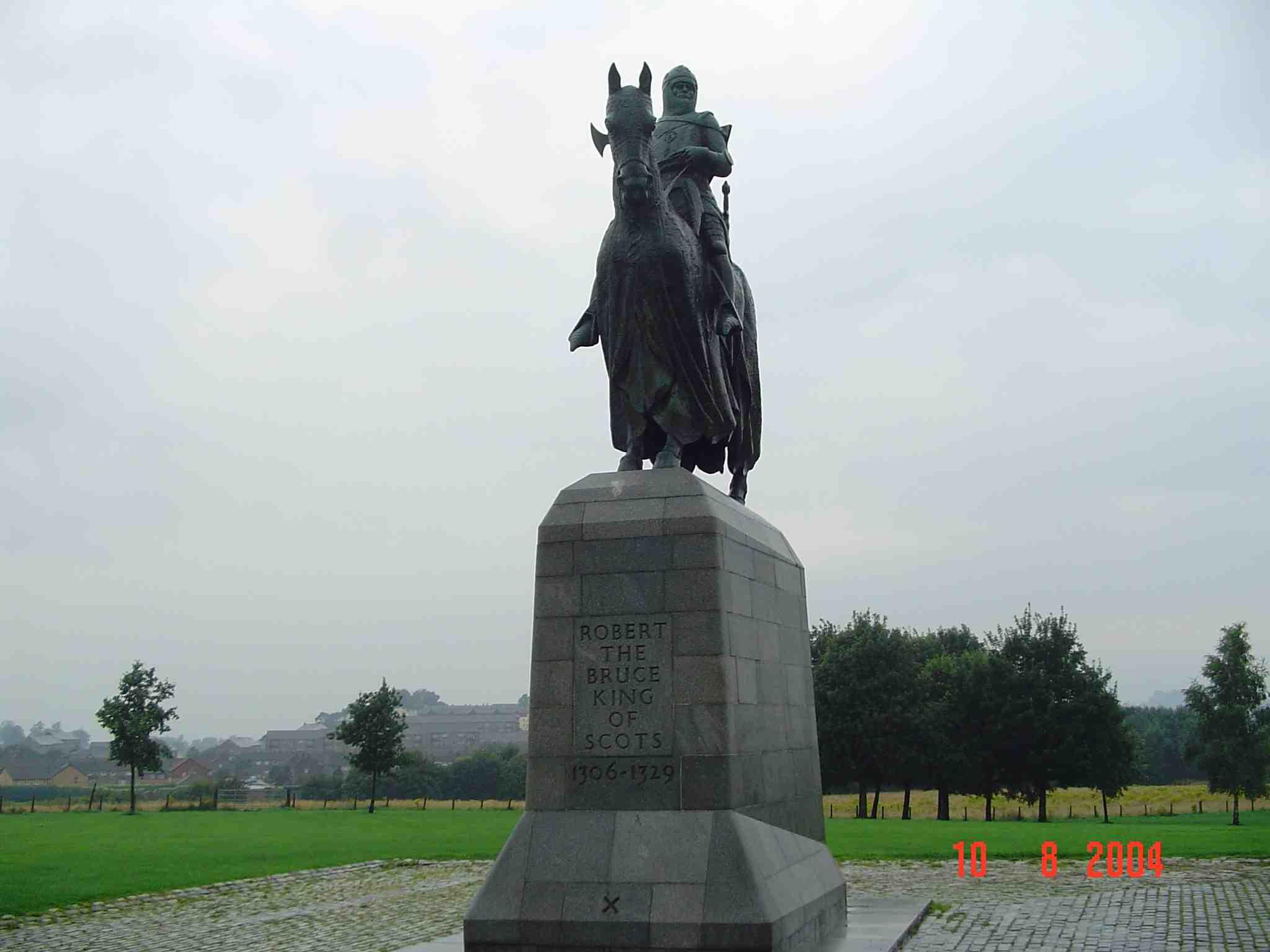|
Most
people only know the name Bannockburn because it was
mentioned at the end of the movie "Braveheart".
The battle of Bannockburn, however, took place after
Wallace's death. He did not live to see
Scotland gain its freedom that day, on the 24th of
June, 1314. This was Scotland's last stand, in
a sense. Edward II, the king of England, was
attacking from the south. Bruce's rash brother
had struck a bargain with England: if they could
gain Stirling Castle by July 1, 1314, they would
gain the entire country. Robert the Bruce,
determined to not let this happen, took his stand on
the high ground overlooking the Bannockburn (burn
means stream). When the English forces tried
to cross the marshy ground, the horses became stuck.
With the aid of caltrops and mercenaries in the
underbrush, the troops were decimated before they
ever reached the main Scottish force. Tens of
thousands of English troops died, and Scotland
retained its freedom. |



